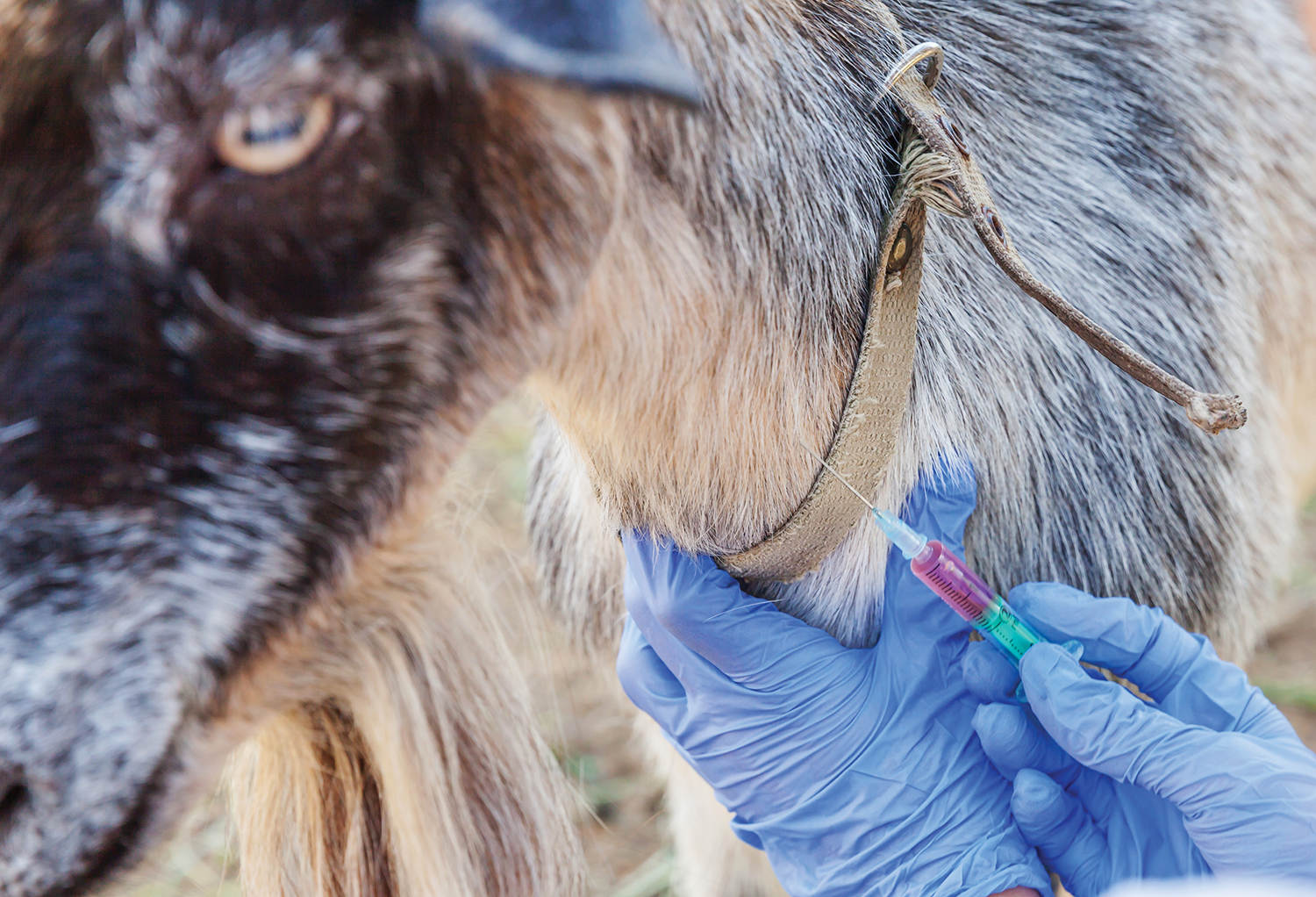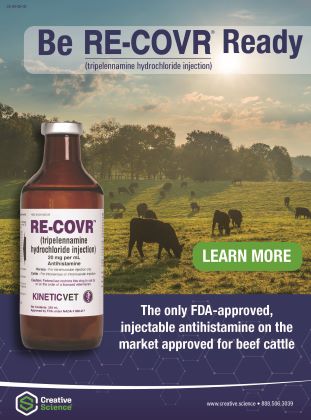Goat Vaccination Program

Goat Vaccination Program
Provided by Dr. Niki Whitley, The Cooperative Extension Program at North Carolina A&T State University
Vaccination protocols should be developed in consultation with your local veterinarian and minimally aimed at preventing diseases in your herd.
Recommended Vaccination
The vaccine commonly known as “CDT” or “CD&T” is a vaccination for Clostridium perfringens type C + D and tetanus. This is the vaccine that everyone raising goats should use. The label directions should be followed closely, including those for handling and storage. Several companies make CDT vaccines and some of those include vaccines for additional clostridial diseases. Consult with your veterinarian to determine if those other diseases are common in your area or are on your farm before spending the extra money on multiple combination vaccines.
Does should be vaccinated for CDT approximately 30 days before giving birth to protect the kids through the first milk or colostrum. If the doe has not been given a priming booster of two shots administered three to four weeks apart at some point in her life, the pre-kidding annual shot will not really be effective. This priming set of shots is usually given when the doe is young but can be done at any age.
Kids should be vaccinated at 5 to 6 weeks of age and then given a booster three to four weeks later. Vaccination of kids from properly vaccinated does prior to 5 weeks of age may result in kids that are not protected and annual boosters may be ineffective.
Kids born to “Does” with uncertain vaccination history or with questionable colostrum ingestion within the first 24 hours of birth should be vaccinated at 7 to 21 days of age and given a booster three to four weeks later. Alternatively, tetanus antitoxin (150 – 250 units) can be given at birth or castration.
Breeding bucks, yearlings and other adults should get annual boosters 30 days prior to the breeding season or when others in the herd are given booster vaccines. New breeding bucks and does with unknown vaccination history should get two initial doses, three to six weeks apart, and then annually. Some research has shown that goats might benefit from booster vaccinations twice a year, six months apart.
Optional Vaccinations
Caseous lymphandentitis (CL) vaccines licensed and available for sheep have caused serious side effects in immune-compromised goats — for example, those that are sick, weak, old, really young or highly stressed. Consult your veterinarian before attempting off-label use of any vaccine or drug. A relatively new product is now licensed and approved for use in goats older than three months; it is not licensed and approved in all states, however. It often results in mild to severe local swelling or even injection site abscesses and is less than 100% effective in preventing CL. There are companies that can create an autogenous (farm-specific) CL vaccine; this is a vaccine made from the exact organism infecting your herd. If made correctly, an autogenous vaccine should be more effective than a commercial one. CL vaccinations should never be used on a farm where CL is not already present; such use interferes with interpreting blood test results if owners want to test for CL in individuals.
There is a sore mouth (contagious ecthyma or orf) vaccine approved/labeled for use in sheep and goats. It should not be used if animals do not already have sore mouth because it is a live vaccine that would infect the farm. In situations where the infection is present, the company recommends vaccinating each lamb and kid crop. New animals should also be vaccinated. Pregnant animals should be vaccinated well ahead of birthing and vaccination should continue yearly.
Companies that offer rabies vaccines will not sell to anyone but veterinarians in many states. Currently, there are producers who vaccinate for rabies, even though the risk of contracting it is low. If a flock is in an area with a high number of rabies cases or one that has a lot of wildlife, or if there is frequent contact between the animals and people, vaccination might be an option. Profitability should be kept in mind, and a veterinarian consulted. Dogs and cats should always be vaccinated, and guardian animals should also be considered for vaccination.
There are foot rot and foot scald vaccines labeled for sheep and/or cattle only. The vaccine does not prevent the disease from occurring. It can help control or eliminate the problem if used with good management, including culling chronically infected animals, regular foot trimming, soaking feet in hoof bath and keeping animals in a clean, dry environment. Foot rot vaccines should be given every three to six months and especially prior to times when there may be hoof problems, such as the wet/rainy season. Follow label directions for dosage, methods, and timing of vaccinations.
Vaccinations for abortions and pneumonia are available for some species. Get a diagnosis for abortions before using a vaccine. Chlamydia and Toxoplasmosis are common microorganisms that can cause abortions, and producers can vaccinate for these if the disease gets in the herd. If the vaccine is used, a booster should be given each year, two to four weeks prior to the breeding season. Prevention for some abortive diseases can be provided through antibiotics such as chlortetracycline, or CTC added to the feed for several weeks prior to birthing. A veterinarian should be consulted for proper doses and timing.
For pneumonia, Mannheimia haemolytica and Pasteurella multocida vaccines are available and labeled for goats, sheep, and cattle. Follow label directions. Generally, after 3 months of age, inject 2 cc subcutaneously and repeat in two to four weeks. If given earlier than 3 months, animals should be re-vaccinated at 4-6 months of age).
Again, a veterinarian, local extension staff and neighboring producers can help determine if the vaccinations for these optional diseases are needed.




